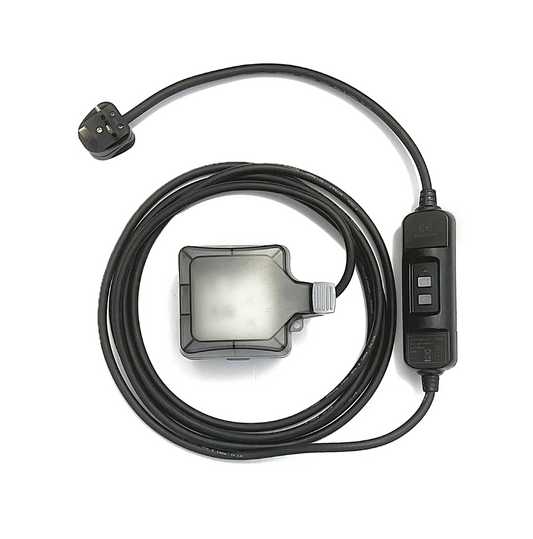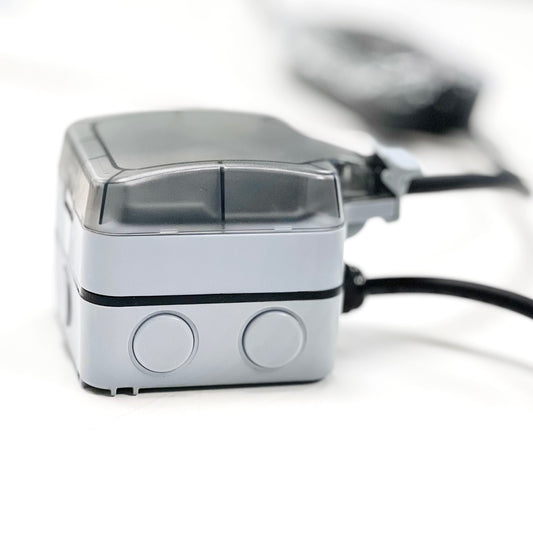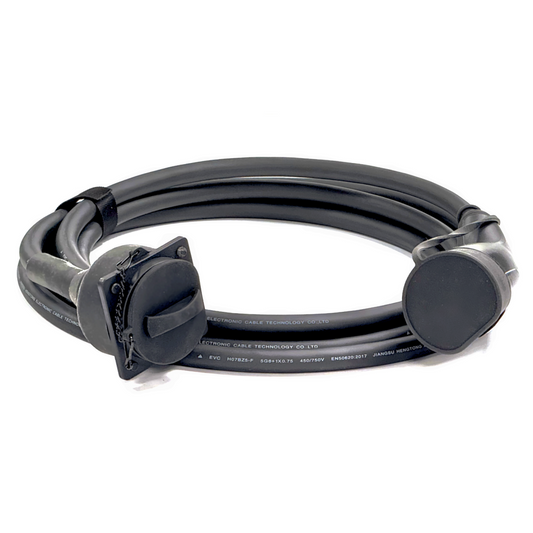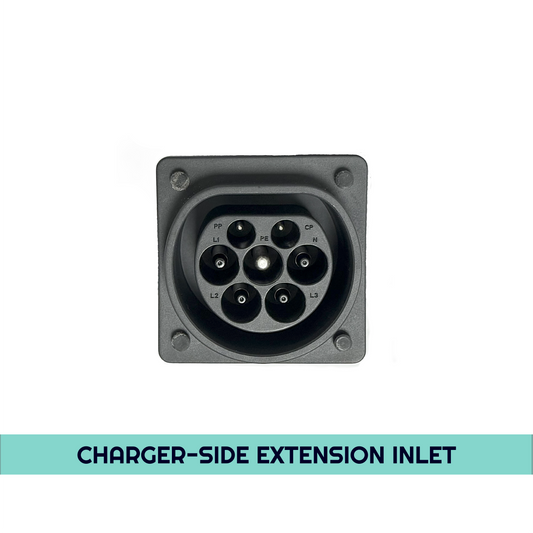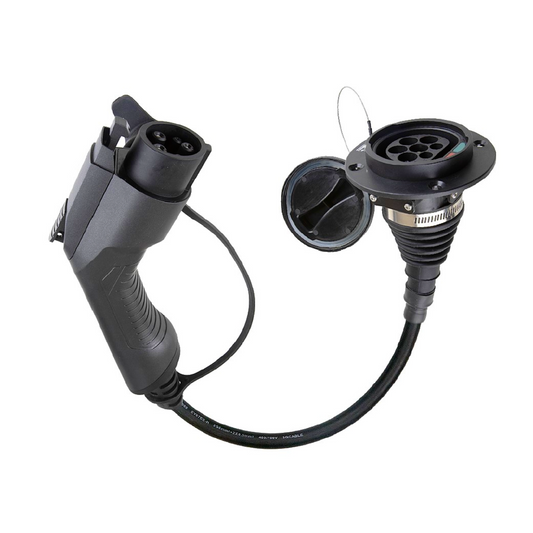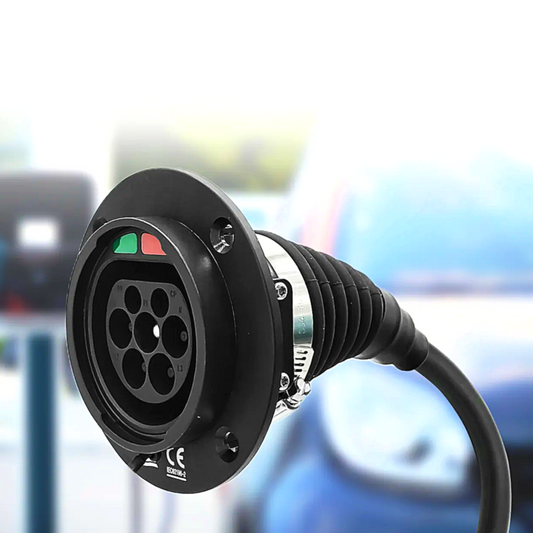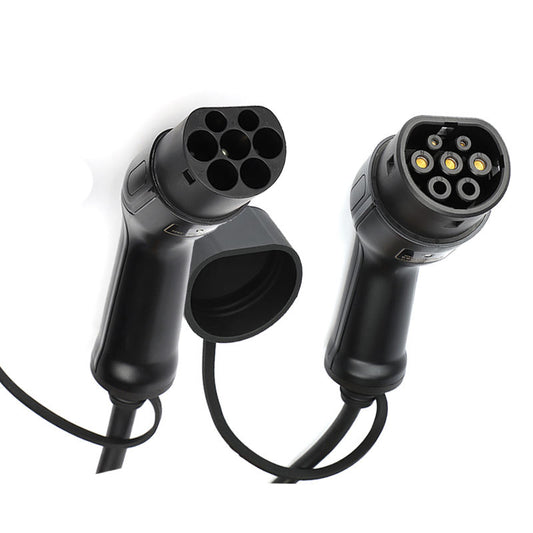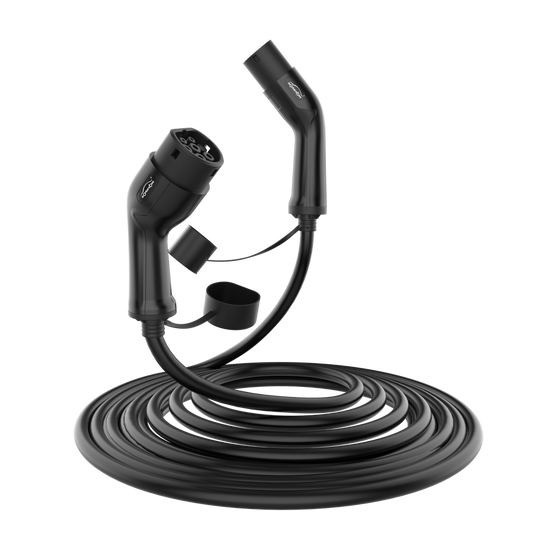EV charging cables connect to the chargepoint socket on one side and to the vehicle inlet on the other side. You will need your own charging cable to plug into most public chargepoints and at home if you have an untethered charging point installed.
Your plug-in electric vehicle will have either a Type 1 or Type 2 inlet, so you'll need to make sure your charging cable has the equivalent connector. Rapid charging stations typically have “tethered” cables meaning you do not need to use an additional cable.

Source: Pod Point
Choosing an EV Charging Cable
EV cables vary in length, current rating (16A or 32A) and can carry single or three-phase electricity. The process for selecting a public cable goes as follows:
- Check whether your car’s inlet is Type 1 or Type 2. The chargepoint socket is always “universal” Type 2.
- Pick a suitable current rating that at least matches your car’s maximum charging rate. As a guide, 16A = approx. 3.6kW, 32A = approx. 7kW for single phase supply.
- Choose an appropriate length cable
💡 Tip: A higher rated cable means you would be able to charge another car at the higher rate, so may be more future proofed.
Conversion adaptors
Adaptors are a great solution for drivers to charge a vehicle of a different Type connector using an existing incompatible connector cable. For instance, a 'Type 1 to Type 2 Adaptor' allows you to convert your existing Type 1 charging cable to Type 2, thus providing added convenience without the hassle of upgrading an existing lead.

